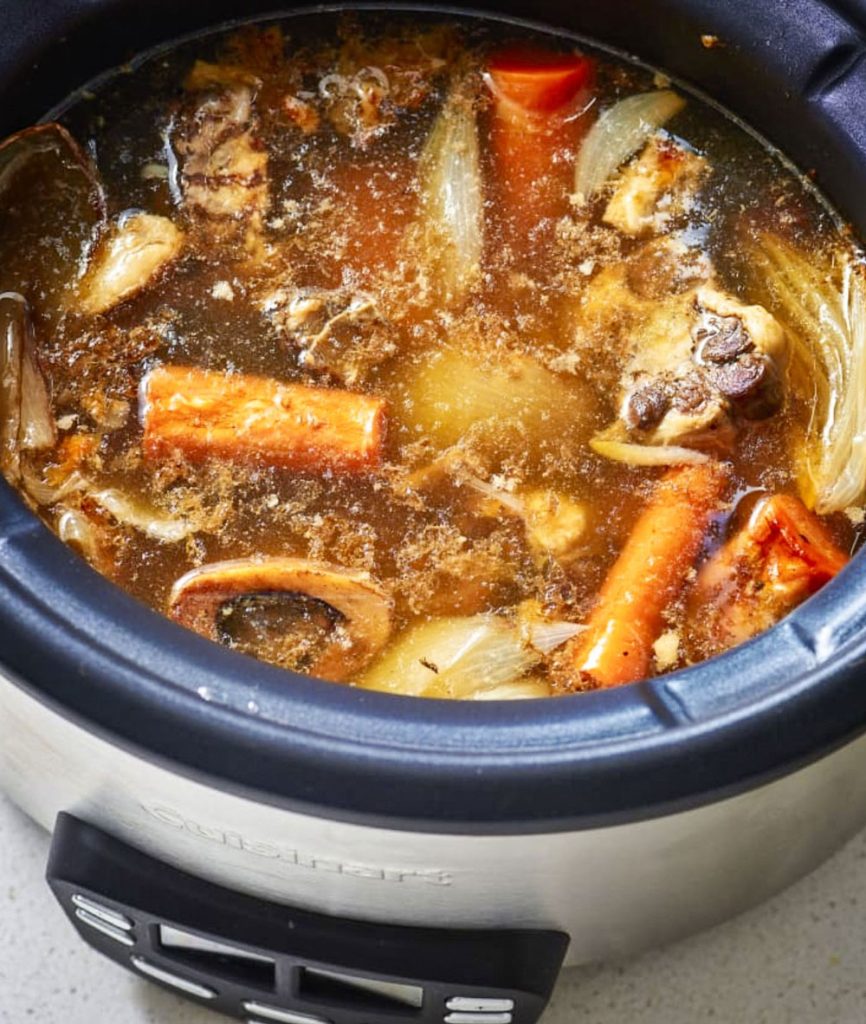Bone broth offers big flavor and health benefits

Bone broth has become more readily available at the grocery store, and it is easy to make at home by simmering collagen-rich bones for about 24 hours. The result is a rich, nutritious and deeply savory broth that can be used in recipes or simply sipped from a mug.
Bone broth provides a large amount of nutrients in each savory sip. The National Library of Medicine reported that by cooking bones for a long time, such as 24 hours, it is possible to obtain a large number of amino acids, minerals and proteins such as collagen. The long cooking time is what makes bone broth different than stock, which is usually cooked for two to three hours.
Bone broth dates back to prehistoric times when hunter-gatherers turned otherwise inedible animal parts like bones, hooves and knuckles into a broth they could drink.
The amino acids in bone broth have a soothing effect on the gut and intestine, which can reduce inflammation and give the immune system a boost. Bone broth also helps produce glutathione, an antioxidant that reduces oxidative stress. Promoting sleep and enhancing detoxification are additional benefits of bone broth.
The hyaluronic acid and gelatin in bone broth promote smooth skin, shiny hair and strong nails. Collagen strengthens tissues like skin, bones, muscles and tendons, while the calcium in bone broth is essential for strong bones.
Bone broth is readily available at most grocery stores but can be high in sodium, so check the label. Bone broth can be made at home with bones from just about any animal – chicken, pork, beef, veal, turkey, lamb, bison, buffalo, venison or fish. Ideally, use high-quality, grass-fed meats. Ask a local butcher for marrowbones, oxtail, knuckles or short-rib bones.
For a more flavorful final product, start by roasting raw bones at 400 degrees Fahrenheit for about an hour until browned. Then place the bones in a crockpot with water. Most recipes include adding vegetables, seasonings and apple cider vinegar. Slow cookers are perfect for making bone broth; use the low setting for 24-48 hours. The longer the broth cooks, the more collagen and gelatin the bones will release.
Use a fine mesh sieve or cheesecloth to strain the liquid. Once cool, store in the refrigerator for up to a week or in the freezer for up to three months. Freeze bone broth in ice cube trays to use in a stir fry, when cooking rice or pasta or mix into mashed potatoes. Mix bone broth into soups or stews or just sip hot bone broth from a mug on a cold night.
Our furry friends may enjoy and benefit from bone broth with their meals too. Frozen and shelf-stable bone broth created specifically for dogs and cats is available at many boutique pet stores, or check with a veterinarian about giving a dog or cat bone broth from your kitchen.
By Lisa Nicklanovich; courtesy photo